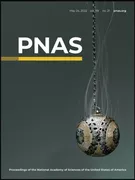Even before the study, it was known that the respiratory volume of untrained people increases from about five to fifteen liters per minute at rest to over 100 liters per minute during sports. Very well-trained athletes even achieve more than 200 liters per minute. It was also known that people frequently contracted SARS-CoV-2 viruses during physical exercise indoors.
However, it was previously unclear how the intensity of physical exertion affects the concentration of aerosol particles in the air we breathe, as well as the specific output of aerosol particles by a person per minute, and thus the potential risk of infection with infectious diseases such as SARS-CoV-2. This information is urgently needed, however, in order to derive targeted protective measures for school sports, indoor club sports, fitness studios as well as discotheques, for example, in the event of serious waves of infection and possibly to be able to avoid closures.
A team led by Prof. Dr. Henning Wackerhage, head of the Associate Professorship of Exercise Biology, and Prof. Dr. Christian J. Kähler, head of the Institute of Fluid Mechanics and Aerodynamics at the Universität der Bundeswehr München, have developed a new investigation method for these questions: In their experimental setup, pre-existing aerosols were first filtered out of the ambient air. Thus purified, this air was inhaled by the test subjects via a special mouth-nose mask during the subsequent exercise test on the ergometer. The intensity of the exertion was increased gradually, from rest to physical exhaustion. The mask was connected to a so-called two-way valve, allowing only the air actually exhaled to flow out. The aerosol particles emitted per minute were then measured and could be directly compared with the current performance of healthy test subjects aged 18 to 40.
In this way, the researchers succeeded for the first time in investigating how many aerosol particles per minute are emitted by a person at different exercise intensities. The result: aerosol emission increases only moderately on average up to a load of about two watts per kilogram of body weight, but exponentially above that. Thus, someone who weighs 75 kilograms reaches this limit on average at around 150 watts on the ergometer. This corresponds to a moderate level of exertion for a recreational athlete, roughly comparable to the intensity of moderate jogging.
The aerosol output of well-trained athletes was significantly higher than that of untrained athletes at maximum effort due to their significantly larger respiratory volume per minute. The researchers did not find a significant difference in particle emission between the sexes.
Although the aerosol experiments only indirectly indicate the intensity of viral emission, the study provides important evidence for indoor sports when a wave of infection threatens to overwhelm the health care system if the population is poorly immunized.
"Based on our experimental results, we distinguish moderate endurance training with an intensity of up to two watts per kilogram and training with high to maximum intensity. Due to the sharp increase in aerosol emissions during high-intensity exercise above this first guideline value, special protective measures are important if there is a high risk of infections with serious consequences," explains study leader Prof. Wackerhage: "Ideally, such training should be moved outside. If this is not possible, then tests should be carried out, for example, to ensure that there are no infected persons in the room, the exercisers should keep a particularly safe distance, and air conditioning with a high air turnover should be used. In addition, lower intensity and shorter exercise duration reduce the risk of infection, and fit, younger athletes may be able to exercise with mouth/nose protection." On the other hand, Prof. Wackerhage said that less protection is needed for moderate exertion, such as light- to moderate-intensity endurance training, and that the risk of infection can be controlled by spacing and air conditioning.
In further experiments, the research team is currently comparing aerosol emissions during strength and endurance training, differentiated according to the age and body characteristics of the test subjects.
To the publication "Aerosol particle emission increases exponentially above moderate exercise intensity resulting in superemission during maximal exercise" in the journal "Proceedings of the National Academy of Science"
To the homepage of the Associate Professorship of Exercise Biology
Contact:
Prof. Dr. Henning Wackerhage
Associate Professorship of Exercise Biology
Connollystr. 32
80809 München
phone: 089 289 24480
e-mail: henning.wackerhage(at)tum.de
Text: Gianna Banke
Photos: PNAS/Andreas Heddergott/TUM

